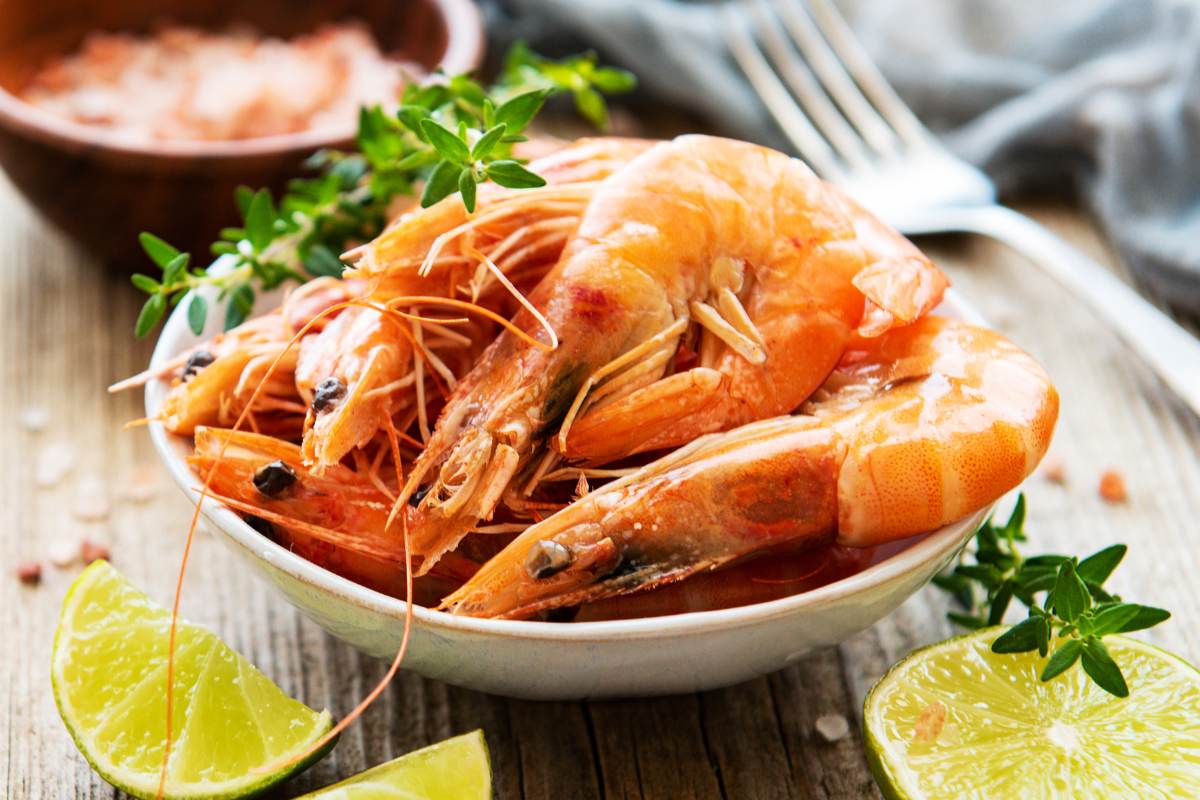Hey there, fellow seafood lovers! Today I’m gonna share everything I know about getting that perfect shrimp temperature Trust me, I’ve messed up enough shrimp dishes to know exactly what works and what doesn’t Let’s dive right in!
The Magic Number: 145°F (63°C)
Look, here’s the deal – if you wanna nail that perfect shrimp every single time, you gotta hit that sweet spot of 145°F (63°C). This isn’t just me talking – it’s what the FDA recommends too. And they know their stuff when it comes to food safety!
Why This Temperature Matters So Much
- Kills harmful bacteria (nobody wants food poisoning, right?)
- Keeps the shrimp juicy and tender
- Preserves that awesome seafood flavor we all love
- Makes sure the shrimp is safe to eat
How to Tell When Your Shrimp is Done
Here’s my foolproof way to know when shrimp is perfectly cooked
- Color Change: They’ll turn from grey to pink with red tails
- Shape: They’ll curl into a loose “C” shape
- Temperature: Use a food thermometer in the thickest part
- Texture: Should be firm but not rubbery
Different Cooking Methods (And How to Nail Each One!)
1. Grilling Shrimp
I love grilling shrimp! Here’s what works for me:
- Preheat grill to medium heat
- Use bigger shrimp (they’re way easier to handle)
- Remove shells before grilling
- Cook time: 2-3 minutes per side
Pro tip Thread them on skewers to prevent them from falling through the grates!
2. Sautéing Shrimp
This is probably my favorite method because it’s quick and easy:
- Heat pan until it’s nice and hot
- Add butter or olive oil
- Toss in some garlic (because why not?)
- Cook 2-3 minutes per side
My secret: Add a splash of white wine at the end – trust me on this one!
Handling Frozen Shrimp (Because We All Use Them!)
Let’s be real – most of us aren’t getting fresh-off-the-boat shrimp. Here’s how to handle frozen ones:
Proper Thawing Methods:
- Best Method: Overnight in fridge
- Quick Method: Cold water bath (30-45 minutes)
- Never Ever: Don’t use hot water or microwave!
Common Mistakes (I’ve Made Them All!)
- Overcooking (makes them tough and rubbery)
- Using warm water to thaw
- Cooking frozen shrimp without thawing
- Not using a thermometer to check temp
Temperature Guide for Different Cooking Methods
| Method | Time | Signs of Doneness |
|---|---|---|
| Grilling | 4-6 mins | Pink with char marks |
| Sautéing | 4-6 mins | Opaque and pink |
| Boiling | 3-4 mins | Floating and pink |
| Steaming | 5-6 mins | Bright pink color |
Some Extra Tips From My Kitchen to Yours
- Size Matters: Bigger shrimp are easier to cook without overdoing it
- Seasoning: Salt and pepper are great, but don’t be afraid to experiment
- Cleaning: Always devein – nobody wants that stuff!
- Timing: Better to slightly undercook (you can always cook more) than overcook
FAQ (Because Y’all Always Ask These!)
Q: Can I eat shrimp if it’s a little undercooked?
A: Nope! Always cook to 145°F for safety.
Q: Why did my shrimp get tough?
A: Probably overcooked. Watch that temp and timing!
Q: Should I buy frozen or fresh?
A: Unless you live by the coast, frozen is usually fresher (weird but true!)
Wrapping It Up
Getting that perfect shrimp temp isn’t rocket science, but it does take a bit of practice. Remember the magic number – 145°F (63°C) – and you’ll be golden. Use a good thermometer, pay attention to those visual cues, and trust your instincts.
I’d love to hear about your shrimp cooking adventures! Drop a comment below if you’ve got any questions or wanna share your own tips. And hey, if you mess up the first time, no worries – we’ve all been there!
Happy cooking, seafood lovers!
P.S. Don’t forget to save this guide for later – you’re gonna want to reference it next time you’re cooking shrimp!

Using a Food Thermometer for Accurate Results
To accurately measure the internal temperature, consider using a food thermometer. It’s easy enough – simply insert it into the thickest part of the shrimp until you reach the desired reading. Remember, properly cooked shrimps turn pink with red tails – another good indicator they’re ready.
Various Cooking Methods for Shrimp
Shrimp, with its delicate flavor and tender texture, can be prepared in a variety of ways. The cooking technique you opt for is dependent on your individual taste and the meal you are making. Regardless of how you decide to cook your shrimp, it’s essential to monitor cooking time carefully to ensure that they reach an internal temperature of 145°F (63°C).
